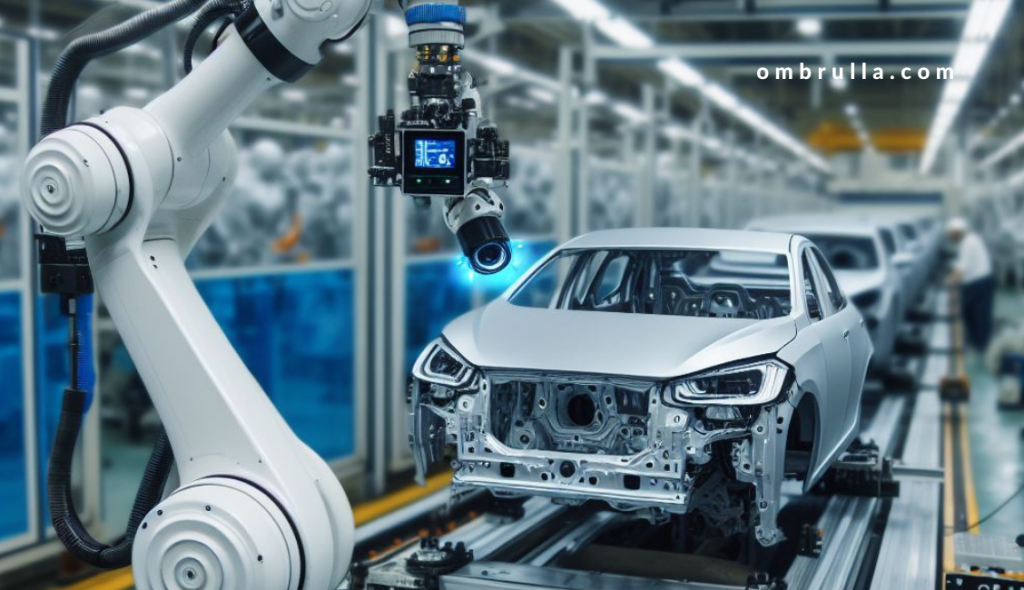
The human eye has long been the cornerstone of quality control in manufacturing. But in today’s era of fast-paced production and intricate designs, manual inspection presents limitations. Enter AI Visual Inspection, a transformative technology reshaping the industry by its ability to “see” with unprecedented accuracy and speed. Let’s delve into the exciting world of AI visual inspection and explore its diverse applications across various manufacturing sectors.
The Power of Seeing Beyond Human Limits
Traditional manual inspection is prone to fatigue, inconsistency, and subjective factors. AI visual inspection, driven by advanced algorithms and deep learning techniques, overcomes these limitations:
- Unwavering Attention: AI inspectors work tirelessly, 24/7, without fatigue or distraction, ensuring consistent quality checks.
- Microscopic Precision: Trained on vast datasets of images, AI models can detect minuscule defects invisible to the human eye, ensuring product integrity.
- Objectivity & Repeatability: AI algorithms follow predefined criteria, eliminating subjective judgments and guaranteeing consistent detection across batches.
- Scalability & Speed: AI systems can analyze large volumes of products effortlessly, increasing inspection capacity and production speed.
AI Visual Inspection Tailored for Diverse Industries
The adaptable nature of AI visual inspection allows it to address unique challenges across various manufacturing sectors:
1. Electronics Industry:
- PCB inspection: Detecting solder defects, misplaced components, and other anomalies on circuit boards with high accuracy.
- Semiconductor inspection: Identifying micro-cracks, contamination, and other microscopic defects on wafers and chips.
2. Automotive Industry:
- Weld seam inspection: Ensuring consistent and strong welds for optimal vehicle safety.
- Paintwork inspection: Identifying minute scratches, dents, and surface imperfections before painting.
- Final assembly inspection: Verifying proper component placement and functionality before vehicle roll-off.
3. Food & Beverage Industry:
- Foreign object detection: Identifying contaminants like metal, plastic, and glass shards in food products.
- Product quality assessment: Ensuring consistent size, shape, and color of food items.
- Packaging integrity inspection: Detecting leaks, tears, and other packaging defects.
4. Pharmaceutical Industry:
- Tablet inspection: Identifying chipped, cracked, or discolored tablets before packaging.
- Capsule & vial inspection: Detecting foreign objects, broken seals, and other integrity issues.
- Label verification: Ensuring correct and consistent labeling for accurate medication identification.
5. Textiles & Apparel Industry:
- Fabric defect detection: Identifying tears, holes, stains, and other imperfections in fabrics.
- Seam inspection: Verifying stitching quality and consistency.
- Pattern matching: Ensuring accurate garment size and pattern alignment.
Benefits Beyond Accuracy:
The impact of AI visual inspection extends far beyond improved defect detection:
- Reduced Costs: Early detection and prevention of defects minimize scrap, rework, and warranty claims, leading to significant cost savings.
- Enhanced Quality: Consistent and objective inspection guarantees higher product quality, boosting customer satisfaction and brand reputation.
- Increased Efficiency: Automation frees up human resources for higher-value tasks, optimizing production throughput and efficiency.
- Predictive Maintenance: AI systems can analyze historical inspection data to predict equipment failures and trigger preventive maintenance, minimizing downtime and production disruptions.
The Future of Manufacturing:
As AI visual inspection technology continues to evolve, we can expect even more sophisticated applications:
- Self-learning AI models: Systems that continuously learn and adapt to identify new defect types and variations without human intervention.
- Real-time anomaly detection: AI algorithms analyzing production lines in real-time to identify and address quality issues before defects occur.
- Integration with automation: Seamless integration with robots and other automated systems for faster and more efficient defect removal and correction.
Conclusion:
AI visual inspection is rapidly transforming the manufacturing landscape. By offering unmatched accuracy, speed, and scalability, it empowers manufacturers to achieve higher quality, reduce costs, and optimize production efficiency. As this technology continues to advance, its impact will only grow, ushering in a new era of intelligent and data-driven manufacturing.
AI Applications AI Data Analytics AI Defect Detection AI forecasting AI for Everyone AI in Automotive AI in Green Logistics AI in Logistics AI in Manufacturing AI in Pharmaseutical AI Inspection AI in Supply chain AI Quality Control AI Quality Controll AI Quality Inspection AI Video Analytics AI Visual Inspection AI Visual Inspection use cases Artificial Intelligence asset health monitoring asset performance management asset performance management software asset tracking Computer Vision Defect Detection equipment tracking Future of AI Google Industrial AI iot asset management Predictive maintenance predictive maintenance systems Process Optimization Ship Inspection using AI

Leave a Reply